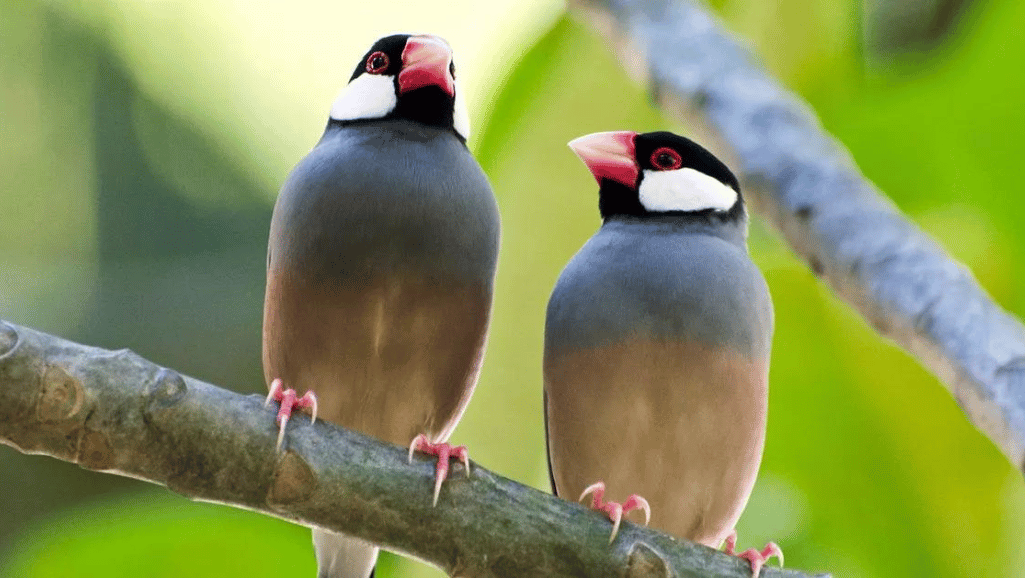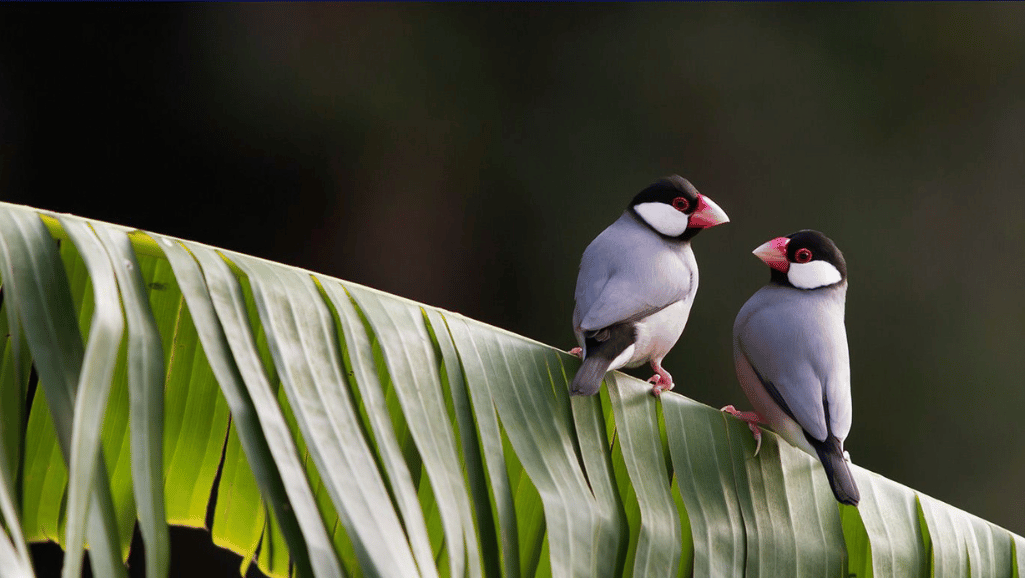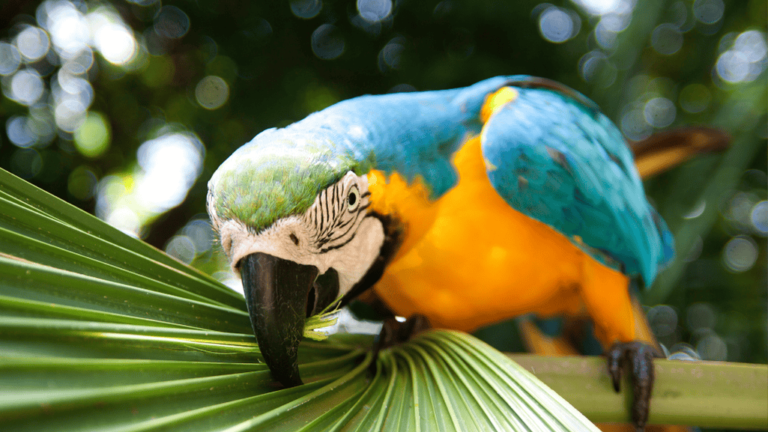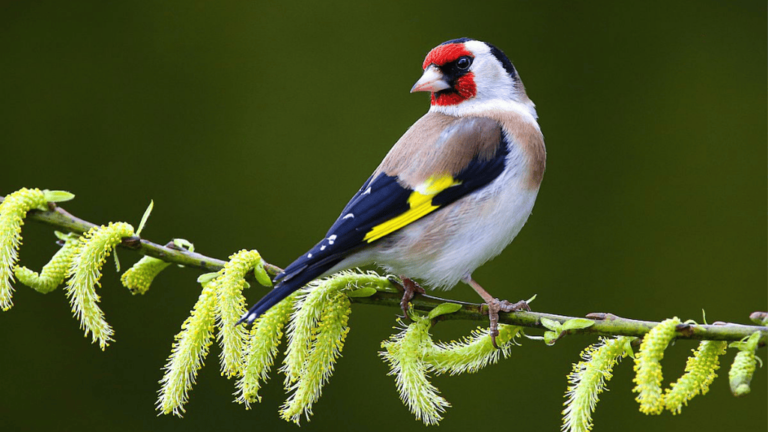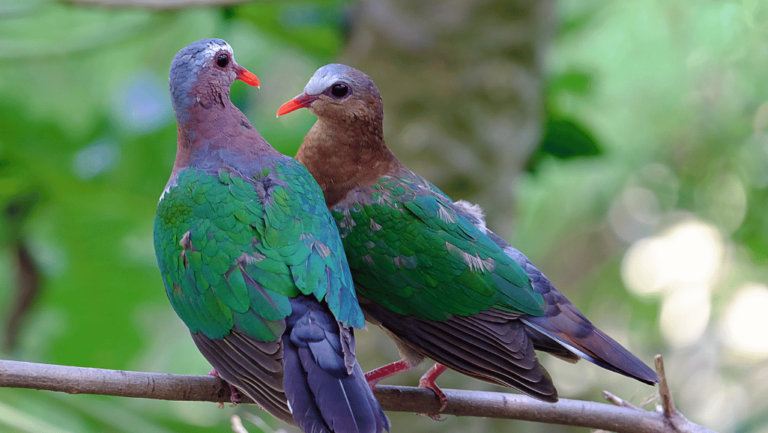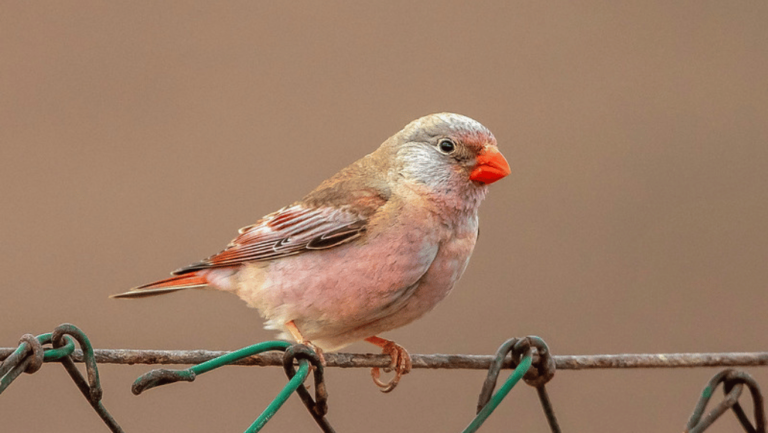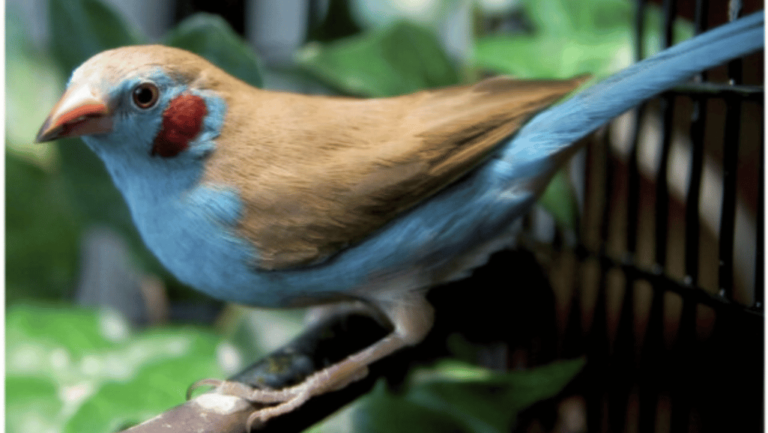Discover the captivating charm of the Java Sparrow, also known as the Finch from the Emerald Isles. Native to the picturesque Indonesian islands of Java, Bali, and Bawean, these small seed-eating songbirds belong to the finch family and have become beloved icons of avian biodiversity.
Key Takeaways:
- The Java Sparrow is a charming finch species native to Java, Bali, and Bawean.
- These small songbirds are known for their vibrant plumage and melodious song.
- Java Sparrows primarily inhabit open grassy areas and cultivated fields.
- They play an important role in avian biodiversity and seed dispersal.
- Creating a bird-friendly garden can attract Java Sparrows to your backyard.
Habitat and Distribution
The Java Sparrow, a species of Estrildid finches, is predominantly found in open grassy areas, cultivated fields, and around human settlements. These charming birds are commonly observed in Indonesia, specifically on the picturesque islands of Java, Bali, and Bawean.
Their habitat selection is closely tied to their survival, as these endemic environments provide the necessary resources for their wellbeing. The Java Sparrows rely on abundant food sources such as seeds and insects, which are plentiful in these regions.
As Estrildid finches, the Java Sparrows have successfully adapted to various ecosystems within their range, making them versatile and resilient. This adaptability allows them to thrive in diverse habitats and contributes to their widespread distribution across the Indonesian archipelago.
The image above showcases the lush and vibrant landscapes that make up the natural habitat of the Java Sparrow. It exemplifies the open grassy areas and cultivated fields where these beautiful birds can be found.
Breeding Habits
**
The breeding habits of Java Sparrows are fascinating and play a crucial role in their survival and population growth. These small finches are monogamous breeders, forming strong bonds with their partners during the breeding season. Let’s take a closer look at their reproduction and nesting behavior.
Reproduction
The breeding season for Java Sparrows typically occurs during the wet season when food sources are abundant. During this time, the male Java Sparrow engages in courtship displays, including elaborate song performances and visual displays such as fluffing their feathers to attract a mate. Once the pair bonds, they engage in behaviors such as mutual preening and feeding each other, further strengthening their bond.
The female Java Sparrow will lay a clutch of 3-6 eggs in a carefully constructed nest. The eggs are usually laid a day apart, with the female taking breaks from egg-laying to ensure proper incubation. Both parents take turns incubating the eggs, with the male often taking the night shift. Incubation typically lasts for approximately 12-14 days, during which both parents diligently maintain the nest temperature and humidity levels.
Nesting Behavior
Java Sparrows are highly skilled nest builders, creating intricate structures using grass, twigs, and other plant materials. Their nests are often hidden within dense vegetation, offering protection and camouflage from potential predators.
Here is an example of a nest-building timeline for Java Sparrows:
- The female begins by selecting a suitable location for the nest, often in shrubs, trees, or tall grass.
- She then starts building the nest structure, weaving together grass and twigs to create a sturdy foundation.
- Next, the female lines the nest with softer materials such as feathers or plant fibers, providing a comfortable and safe environment for the eggs.
- Once the nest is complete, she lays her eggs, carefully placing them in the center of the nest.
- Both parents take turns incubating the eggs and diligently guarding the nest from potential threats.
Parental Care
Once the eggs hatch, both parents share the responsibility of feeding and caring for the chicks. They regurgitate food to feed the young, providing them with a nutrient-rich diet necessary for their growth and development. Java Sparrow chicks usually fledge around 16-21 days after hatching, during which they gradually gain strength and learn essential survival skills from their parents.
Overall, the breeding habits of Java Sparrows are a testament to their dedication and commitment to ensuring the survival of their species. Their intricate nests, shared parental care, and strong bond formation contribute to the successful reproduction and population growth of these charming finches.
| Key Points: |
|---|
| Java Sparrows are monogamous breeders, forming strong bonds during the breeding season. |
| The breeding season for Java Sparrows occurs during the wet season when food sources are abundant. |
| They build intricate nests made of grass and twigs, often hidden within dense vegetation. |
| The female lays a clutch of 3-6 eggs, which both parents incubate for approximately 12-14 days. |
| Both parents share the responsibility of feeding and caring for the chicks until they fledge. |
Conservation Status
The Java Sparrow, classified as a species of least concern on the IUCN Red List, currently enjoys a stable population. This is welcome news for bird lovers and conservationists alike, who appreciate the striking beauty and melodic songs of these finches. However, localized declines in certain regions have raised concerns about the species’ long-term survival.
The primary threats facing Java Sparrows are habitat loss and illegal trapping for the pet trade. As human development encroaches on their natural habitats, these birds face a diminishing availability of suitable nesting and foraging sites. Moreover, their captivating appearance and pleasant vocalizations make them popular targets for illegal pet trade collectors.
In response to these challenges, dedicated conservation efforts are underway to safeguard the Java Sparrow and its habitats. Governments and organizations have established protected areas to preserve critical ecosystems for these birds. Public awareness campaigns educate communities about the importance of conservation and promote responsible pet ownership.
Continuous monitoring of Java Sparrow populations is essential to track their numbers and detect any concerning trends. Ongoing conservation initiatives focus on habitat restoration, anti-poaching measures, and sustainable alternatives to illegal wildlife trade.
By prioritizing the well-being of the Java Sparrow, we can ensure the continued survival and thriving population of this cherished finch species.
Migration Patterns
The Java Sparrow, although a sedentary species, exhibits seasonal movements within its habitat range. These movements are primarily driven by changes in food availability and nesting resources. While not long-distance migrations, these shifts in location play a vital role in the survival and reproduction of Java Sparrows. As they seek out suitable foraging areas and nesting sites, they may travel relatively short distances within their native habitats.
Studying the migration patterns of Java Sparrows provides valuable insights into their behavior and ecology. It allows researchers to understand how these birds adapt to changing environmental conditions and make informed conservation decisions. By tracking their movements and understanding the factors that influence their seasonal shifts, we can take steps to protect their habitats.
The migration patterns of Java Sparrows can be visually represented in the following table:
| Migration Season | Location | Reason for Movement |
|---|---|---|
| Wet Season | Within habitat range | Seeking abundant food resources |
| Dry Season | Within habitat range | Optimizing nesting conditions |
| Transitional Seasons | Within habitat range | Finding suitable foraging and nesting sites |
Role in Avian Biodiversity
As a member of the finch family, the Java Sparrow plays a significant role in avian biodiversity. Its seed-eating habits contribute to the spread and dispersal of various plant species, making it an important agent of seed dispersal and ecosystem functioning. By consuming and subsequently spreading seeds, the Java Sparrow aids in the reproduction and distribution of plants, which is vital for maintaining healthy ecosystems.
In addition to its role in seed dispersal, the Java Sparrow’s presence in its native habitats contributes to the overall biodiversity and ecological balance of these ecosystems. It interacts with other bird species, insects, and plants, forming intricate ecological relationships that are essential for the functioning and stability of the ecosystem.
Studying the ecology and behavior of the Java Sparrow provides valuable insights into the broader field of finch ornithology. It allows researchers to understand the complex interactions between birds and their environments, highlighting the intricate web of life that exists within avian biodiversity.
To illustrate the importance of the Java Sparrow’s role in avian biodiversity, the table below compares its ecological contributions to those of other finch species:
| Species | Seed dispersal | Pollination | Ecosystem balance |
|---|---|---|---|
| Java Sparrow | High | Low | High |
| Other Finch Species | Varies | Varies | Varies |
The table clearly demonstrates the Java Sparrow’s significant role in seed dispersal and ecosystem balance compared to other finch species. Its contributions are instrumental in shaping avian biodiversity and maintaining the ecological harmony of its habitat.
Attracting Java Sparrows to Your Garden
Creating a bird-friendly garden is a delightful way to attract the beautiful Java Sparrow and other finch species to your backyard. By providing a welcoming environment with the right resources, you can enjoy the presence of these charming birds and contribute to their well-being.
Native Plants for Foraging
One of the key elements in attracting Java Sparrows is to cultivate a diverse range of native plants that produce seeds and attract insects. These plants serve as essential food sources for these birds, mimicking their natural habitat.
Here are some native plants to consider:
- Grasses and wildflowers
- Seeded plants such as sunflowers and daisies
- Berry-producing shrubs like elderberry or raspberry
Providing Fresh Water Sources
Joyful Java Sparrows and other birds are attracted to fresh water sources for drinking and bathing. Consider incorporating a bird bath or a small pond in your garden. Ensure that the water source is clean, regularly refreshed, and easily accessible for the birds.
Limiting Pesticide Use
To create a truly bird-friendly garden, limit the use of pesticides or avoid them altogether. Pesticides can harm not only the birds but also the insects they rely on for food. Embracing organic gardening methods will create a healthier and more sustainable ecosystem.
Maintaining Natural Vegetation
Java Sparrows and other birds find safety and comfort in natural vegetation. Avoid excessive pruning and trimming, as it may remove potential nesting sites or shelter for the birds. Letting your garden grow naturally provides the Java Sparrows with a sense of security and encourages them to visit and stay.
Native Plants for Attracting Java Sparrows
| Plant Type | Examples |
|---|---|
| Grasses and Wildflowers | Switchgrass, Blazing Star, Coneflowers |
| Seeded Plants | Sunflowers, Daisies, Black-Eyed Susans |
| Berry-Producing Shrubs | Elderberry, Raspberry, Serviceberry |
By implementing these bird-friendly practices, you can create a welcoming space that not only attracts Java Sparrows but also contributes to the overall health and vitality of your local avian community. Enjoy the beauty of nature in your own backyard while supporting the conservation efforts for these charming finches.
Observing and Enjoying Java Sparrows
Observing and enjoying Java Sparrows in their natural habitats can be a rewarding experience for birdwatching enthusiasts. These birds can often be seen perched on tree branches or foraging on the ground for seeds and insects. Patience and quiet observation are key to observing their behavior, and binoculars or a camera with a telephoto lens can help get a closer look. When photographing Java Sparrows, it’s important to minimize any disturbances and respect their natural behavior.
When it comes to birdwatching finches like the Java Sparrows, establishing a good vantage point is crucial. Find a comfortable spot, preferably with a clear line of sight to the areas where the birds are most likely to be active. This could be near a feeding area or their favorite perching spot. Bring along a pair of binoculars to enhance your close-up view of these charming birds.
Java Sparrows are known for their distinctive behaviors, such as socializing in small groups and engaging in courtship displays. Take the time to observe their interactions, paying attention to their vocalizations, mating dances, and feeding habits. It’s fascinating to witness their communication and social dynamics, which adds depth to the overall birdwatching experience.
Tips for Observing Java Sparrows:
- Choose a quiet and peaceful location that allows for uninterrupted observation.
- Be patient and allow the birds to acclimate to your presence.
- Stay still and avoid sudden movements to prevent scaring away the birds.
- Use binoculars or a camera with a telephoto lens for a closer look.
- Respect the natural behavior of the birds and minimize disturbances.
- Take note of their habitat preferences and areas they frequent the most.
| Essential Equipment for Photographing Java Sparrows | Recommended Brands |
|---|---|
| Camera | Nikon, Canon, Sony |
| Telephoto Lens | Nikon Nikkor, Canon EF, Sony FE |
| Tripod | Manfrotto, Gitzo, Vanguard |
| Binoculars | Zeiss, Swarovski, Nikon |
Photographing Java Sparrows can be a fulfilling endeavor, but it requires skill and patience. Consider the following photography tips to capture stunning images of these beautiful birds:
- Use a telephoto lens with a focal length of at least 300mm for capturing sharp and detailed images.
- Shoot in natural light for vibrant colors and avoid using the flash to prevent startling the birds.
- Experiment with different angles and compositions to showcase the uniqueness of each bird.
- Pay attention to the background and try to capture the birds in their natural environment.
- Adjust your camera settings for fast shutter speeds to freeze the birds in action.
- Take multiple shots to ensure you capture the perfect moment.
Remember, capturing the perfect photograph is a combination of technical skills, artistic vision, and respect for the natural behavior of the birds. Enjoy the process of observing and photographing Java Sparrows, and you’ll create beautiful memories that showcase the wonders of nature.
The Java Sparrow as Pets
The Java Sparrow is a delightful bird species that is increasingly favored as a pet due to its striking appearance and melodious song. However, keeping Java Sparrows as pets requires careful attention and proper care to ensure their well-being and happiness.
One of the key aspects of finch pet care is providing a spacious and suitable cage for your Java Sparrow. The cage should be large enough to allow them to stretch their wings and move around comfortably. It should also include perches and toys to keep them entertained and stimulated.
A balanced diet is essential for the health of your Java Sparrow. Offer them a variety of high-quality seeds, such as millets and canary grass seeds, as well as fresh fruits and vegetables. It’s important to note that birds have specific dietary requirements, so consult with a veterinarian or avian specialist to ensure you are providing the right nutrition.
Regular social interaction is crucial for maintaining the well-being of Java Sparrows. These birds are social by nature and thrive on companionship. Spend time with your pet by talking to them, offering treats, and providing opportunities for interactive play. Building a bond with your Java Sparrow will help them feel secure and happy in their home.
Understanding Finch Behavior
To create an enriching environment for your Java Sparrow, it’s important to understand their natural behavior and instincts. These birds have a strong need to fly, so allow them time outside of the cage for supervised exercise. Set up a bird-safe area in your home where they can spread their wings and explore their surroundings.
Java Sparrows are communal birds and thrive in the company of other finches. Consider introducing a same-species companion for your pet to fulfill their social needs. However, always introduce new birds slowly and monitor their interactions to ensure compatibility.
Observing and appreciating the unique behavior of Java Sparrows will deepen your connection with these intelligent birds. They are known for their playful nature, agility, and acrobatic moves. Spend time watching their interactions, as this will not only provide entertainment but also a better understanding of their needs.
Benefits of Keeping Java Sparrows as Pets
- Enjoy the melodious song and playful antics of your Java Sparrow.
- Experience the joy of bonding with an intelligent and social pet bird.
- Add beauty and vibrancy to your living space with their striking plumage.
- Expand your knowledge of bird behavior and contribute to their conservation.
By providing proper care, attention, and understanding of their behavior, Java Sparrows can thrive as beloved pets, bringing happiness and companionship to their owners.
Conclusion
In conclusion, the Java Sparrow, with its vibrant plumage and cheerful song, adds a touch of beauty and serenity to the landscapes of the Emerald Isles. This finch species, native to the Indonesian islands of Java, Bali, and Bawean, has adapted to its habitats and plays a crucial role in avian biodiversity. Although the Java Sparrow faces conservation challenges, initiatives are underway to protect these birds and their habitats.
Understanding the habits of Java Sparrows, such as their breeding habits and migration patterns, can contribute to their well-being and preservation. By participating in conservation efforts, such as supporting protected areas and raising awareness about the importance of bird conservation, we can help ensure the long-term survival of the Java Sparrow and other avian species.
Whether enjoying the beauty of Java Sparrows in the wild as birdwatchers or keeping them as pets, it is essential to appreciate their uniqueness and contribute to their conservation. With our collective efforts, we can continue to admire the vibrant colors and melodious songs of the Java Sparrow for generations to come, while also preserving the delicate balance of our avian ecosystems.
FAQ
What is the Java Sparrow?
The Java Sparrow, also known as the Finch from the Emerald Isles, is a charming bird species native to the Indonesian islands of Java, Bali, and Bawean. It is a small seed-eating songbird belonging to the finch family.
Where is the Java Sparrow found?
The Java Sparrow is primarily found in open grassy areas, cultivated fields, and around human settlements. It is commonly seen in Indonesia, particularly on the islands of Java, Bali, and Bawean.
What are the breeding habits of the Java Sparrow?
Java Sparrows are monogamous breeders, forming strong bonds during the breeding season. They build intricate nests made of grass and twigs, often hidden within dense vegetation. The female lays a clutch of 3-6 eggs, which both parents take turns incubating for approximately 12-14 days. Both parents share in the responsibility of feeding and caring for the chicks until they fledge.
What is the conservation status of the Java Sparrow?
The Java Sparrow is listed as a species of least concern on the IUCN Red List, indicating that its overall population is stable. However, localized declines in certain areas have been observed due to habitat loss and illegal trapping for the pet trade. Conservation efforts are in place to protect the Java Sparrow and its habitats.
Does the Java Sparrow migrate?
The Java Sparrow is a sedentary species, meaning it does not undertake long-distance migrations. However, seasonal movements within its habitat range have been observed, potentially in response to changes in food availability and nesting resources.
What role does the Java Sparrow play in avian biodiversity?
As a member of the finch family, the Java Sparrow plays an important role in avian biodiversity. Its seed-eating habits contribute to the spread and dispersal of various plant species, making it an important agent of seed dispersal and ecosystem functioning.
How can I attract Java Sparrows to my garden?
Creating a bird-friendly garden can attract Java Sparrows and other finch species. Providing a diverse range of native plants that produce seeds and attract insects can help create a suitable foraging habitat. Additionally, providing fresh water sources, limiting pesticide use, and maintaining natural vegetation can contribute to attracting a wide variety of avian visitors.
How can I observe and enjoy Java Sparrows?
Observing Java Sparrows in their natural habitats can be a rewarding experience for birdwatching enthusiasts. They can be seen perched on tree branches or foraging on the ground. Patience and quiet observation are key, and using binoculars or a camera with a telephoto lens can help get a closer look.
Can I keep Java Sparrows as pets?
Yes, the Java Sparrow is a popular choice as a pet bird. Proper care and attention are required, including providing a spacious cage, a balanced diet, and regular social interaction. Understanding their natural behavior and instincts is essential for providing an enriching environment for these intelligent birds.
What is the conclusion of this article?
The Java Sparrow, with its vibrant plumage and cheerful song, brings beauty and serenity to the landscapes of the Emerald Isles. It is an important species for avian biodiversity and while facing conservation challenges, efforts are being made to protect and conserve it. Understanding its habits, participating in conservation initiatives, and appreciating its beauty can contribute to its well-being and conservation.



